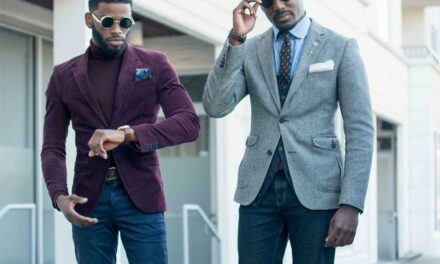During Mass or other ceremonies, priests are frequently asked to explain the significance of their vestments. Many people are curious as to whether it’s required to wear all the attire seen in churches and other places of worship.
By the 4th century, vestments worn in church liturgies were very similar to those worn by Greeks and Romans for everyday use. Because of this, vestment in today’s Church has become distinctive because they no longer match the daily wear of the regular people. Ministers and priests wear these distinctive garments because of their historical significance and background in Christianity.
As with clergy robes and vestments, clergy clothing is meant to impart a sense of pride, reverence, authority, and respect to the wearer. It distinguishes you from your own personal words, as you are declaring God’s word. Symbolic attire is essential to show respect to your religion and congregation in religious buildings such as churches, mosques, temples, and synagogues. Having said the essence of wearing a vestment, read down below and grab some tips for having your personalized vestment.
Here are tips on how you can get your first vestment customized:
1. Set Your Budget
Robes vary in quality and price. As a result, staying within your budget is imperative. Still, if you believe investing in higher quality is worthwhile, ensure that you won’t be overcharged for it. When setting a budget, it would be helpful if you gather ideas and research the actual price ranges of a beautiful and durable vestment. Then and only then can you be sure that you’re paying reasonable amounts.
2. Choose Your Supplier or Personalized Vestment Tailor
If you want to purchase your first clergy vestments, it’s time to select the best personalized vestment maker near you. Various options can be customized on the vestments; different sizes, fabrics, and cuts can be made on every model. A master seamstress can sew and embellish various liturgical vestments, altar linens, hangings, and tapestries. The key here is to find someone who can design your vestment according to your request and preferences.
It’s possible to design entirely original vestments or alter the existing decoration on those with decorated panels and orphreys. An example would be a meticulously hand-embroidered image with impeccable details. Most client-provided art can be reproduced by the embroiderers using manual handicrafts medium.
In addition, images can be made as appliques by cutting delicate fabrics into shapes and sewing them into vestments by hand. A pearly, sequined, or tasseled design can be added to any of these options too.

3. Get Yourself Measured
It is essential to take measurements for any garment. Following these steps will help you determine your robe sizing, whether you are buying ready-made robes or custom-made ones:
- Unit of Measurement: The shop’s sizing chart may come in inches or centimeters.
- Height: As you would wear the garment with footwear, this will be its total height. You can decide the exact length of your vestment.
- Arm Sleeves: Some robes do not require sleeves to be measured. But if it’s necessary, place your hand toward your face. Bend it back as if looking at a watch. You should maintain a parallel position with your arm. The center of your measuring tape should be at the back of your neck. You should then take it over your shoulder, around your elbow, and finally to your wrist. This should be the right way to measure your arm sleeves. (Although your tailor already knows this, of course.)
- Chest: The measuring tape should be wrapped under the armpits of the chest. Mark the point at which the tape measure meets both ends.
4. Choose Your Vestment’s Fabric
Priestly vestments should be designed to reflect each priest’s faith and symbolize their commitment to the congregation. Therefore, the ones you wear should be custom-made for you to feel comfortable while providing hope and faith to those who turn to you for guidance. And one feature for customizing this garment is with the fabric. As with any other outfit, it’s imperative to look your best.
Robes can be made out of a variety of fabrics. You can choose from the following options:
- Contessa: This is a satin-like fabric. Glowing and smooth, it’s a pleasure to touch. You can easily wash it in the washing machine, so it’s convenient to wear and wash.
- Viva: This fabric is stain-resistant and easy to clean. Aside from preventing wrinkles, it can also prevent snags. Additionally, it may need to be ironed or steamed after being machine washed.
- Wonder crepe: Traditionally, robes are made of this material. The pattern is snag-proof, soil-releasing, and has a vibrant appearance. There are no special maintenance requirements.
Conclusion
It’s crucial to find vestments that allow you to do your essential ministry while keeping comfort, fit, and elegance in mind. Priestly attire has an enormous amount of significance and history. A well-fitting tailored robe is necessary for priests and clergy to represent their churches well. Choose your robes the same way you would choose any other garment. Consider the following tips above, and you’ll have an attire that can exude a great statement as a member of the clergy.















